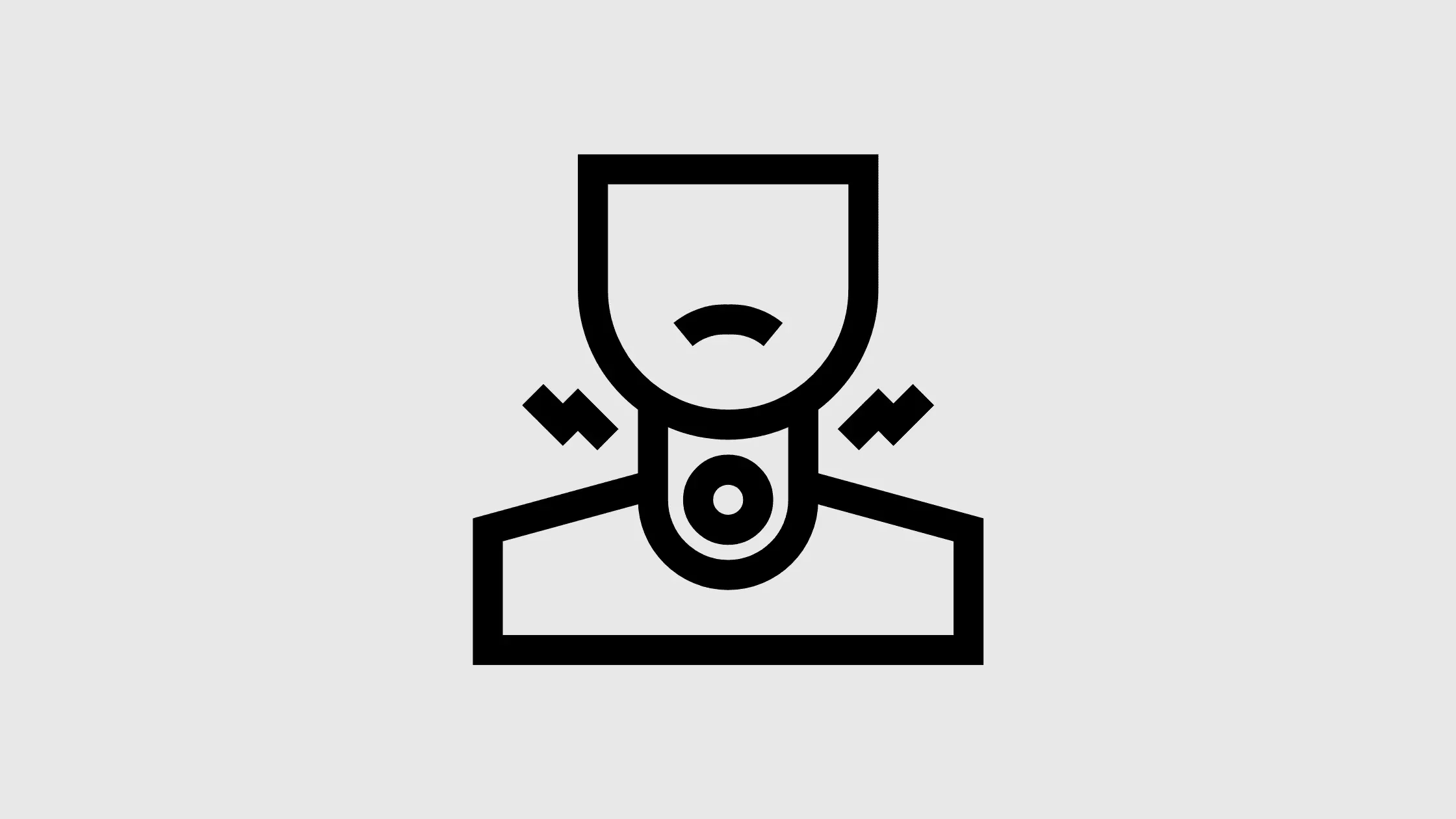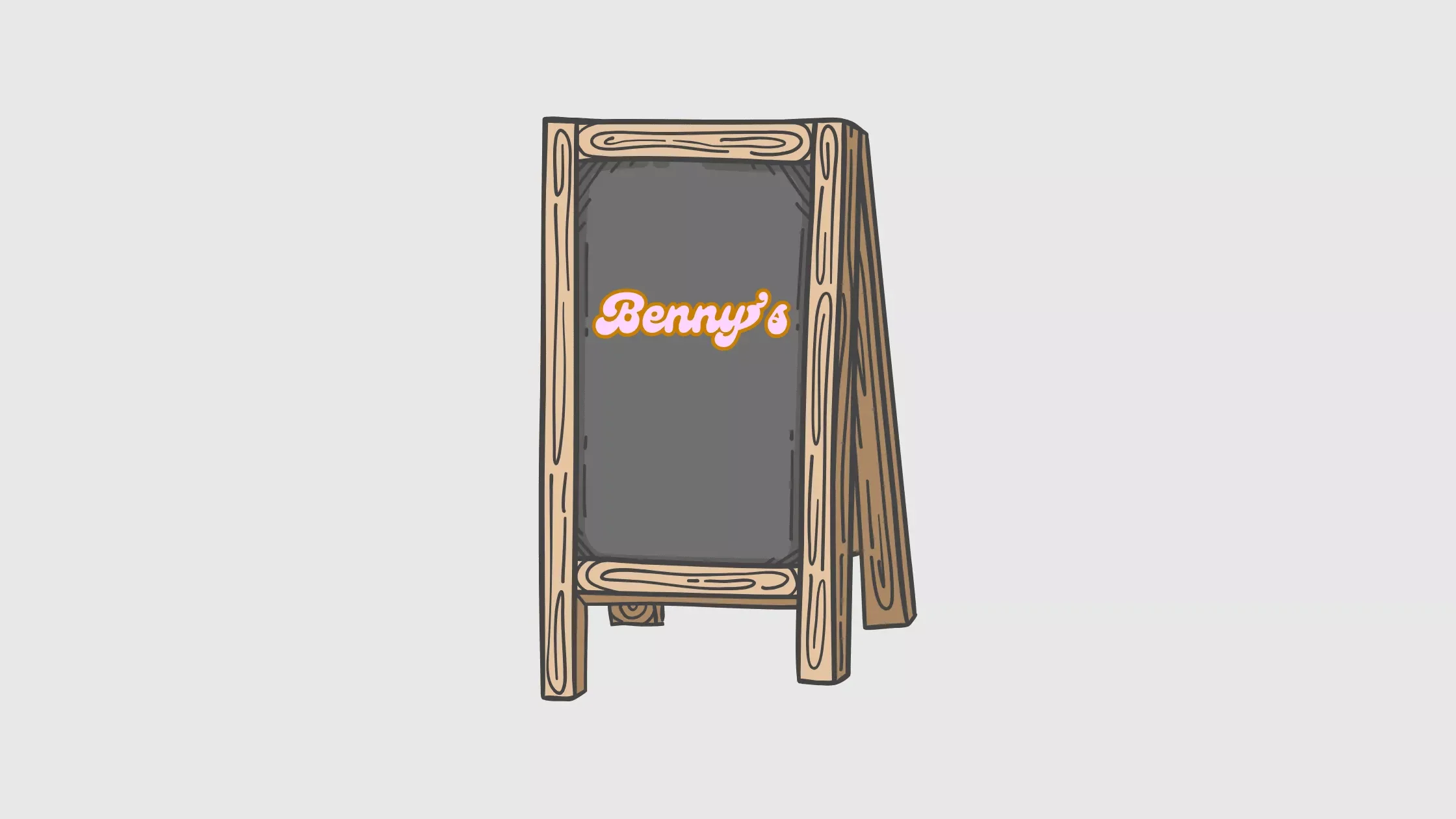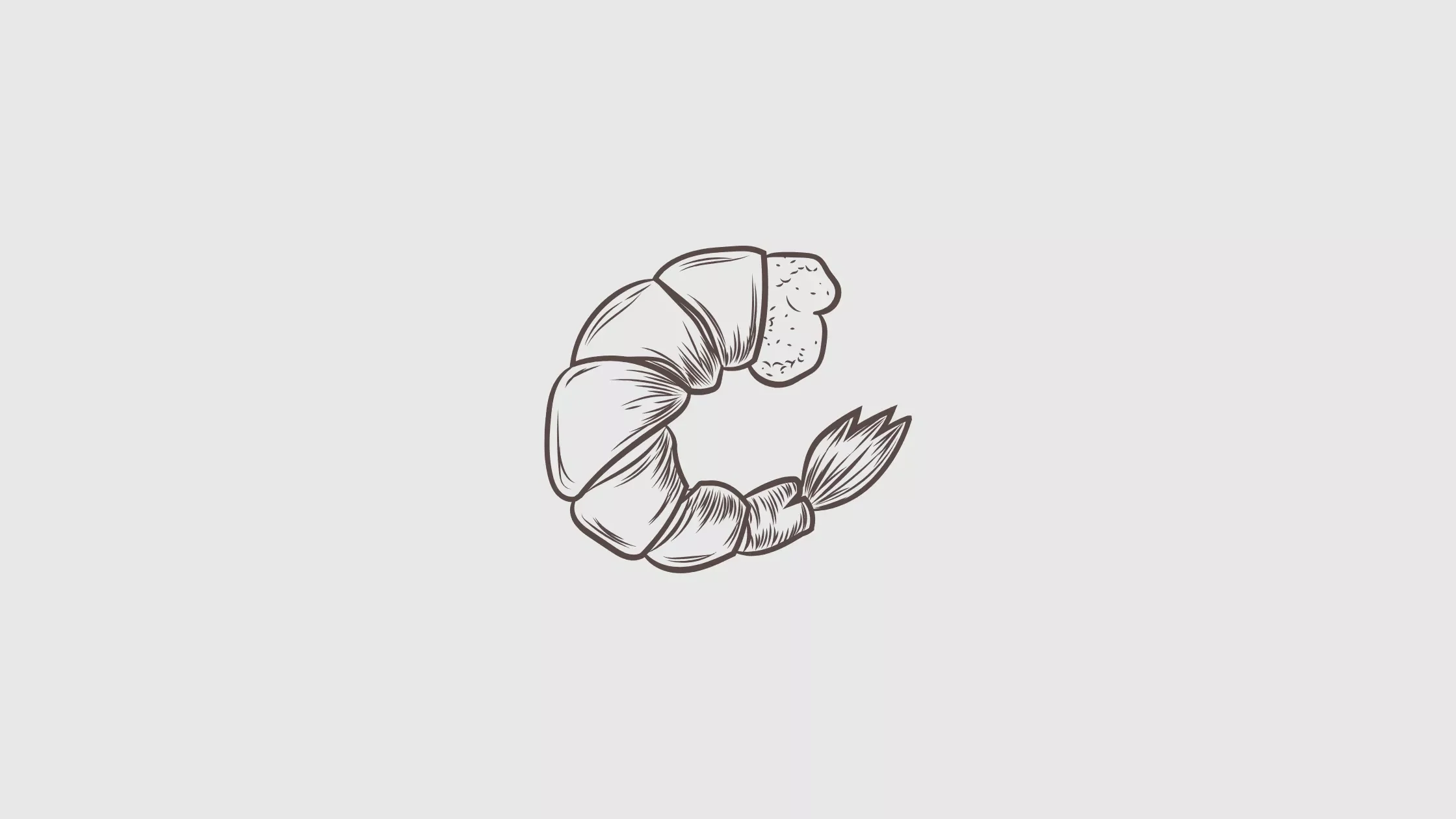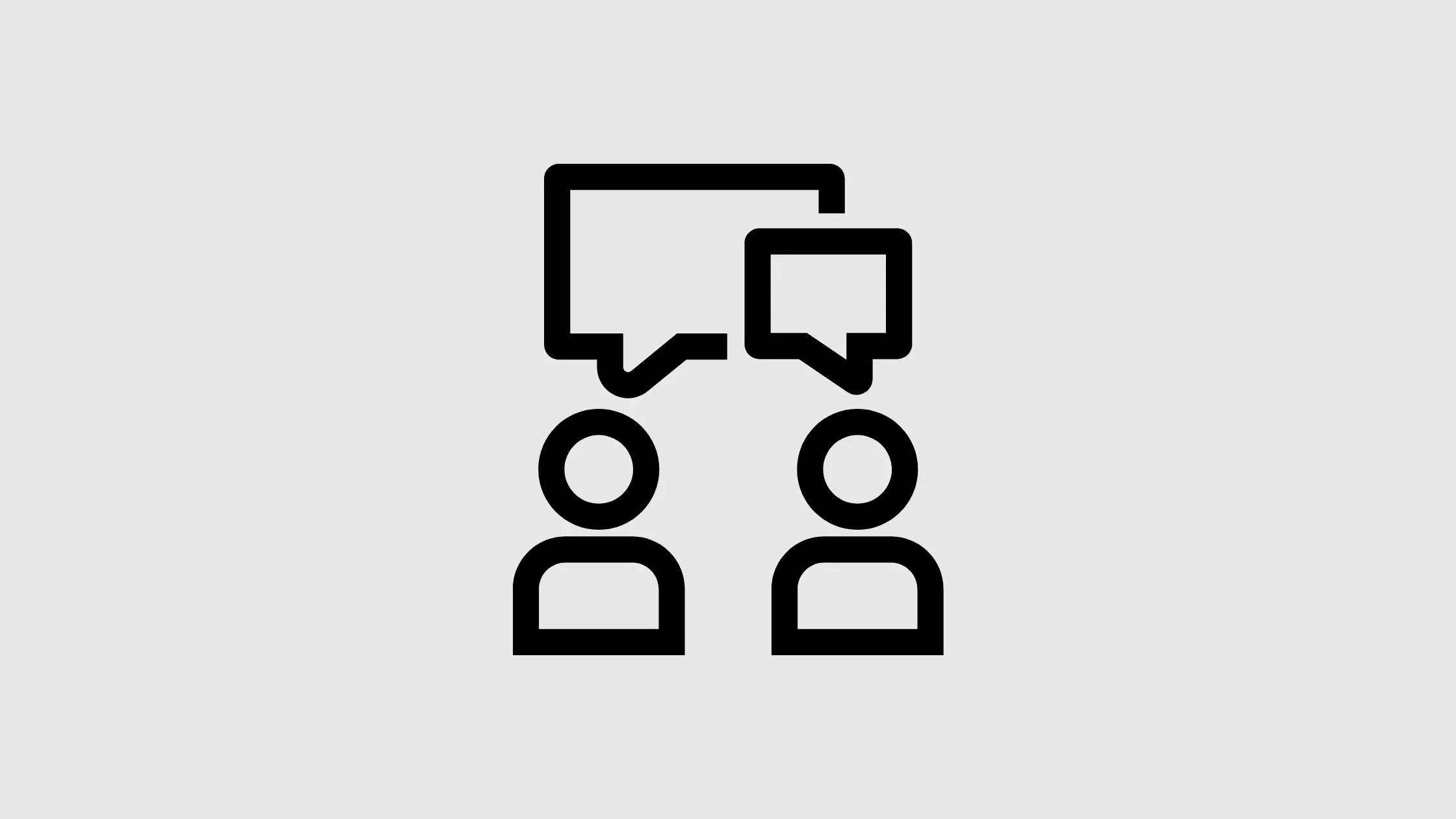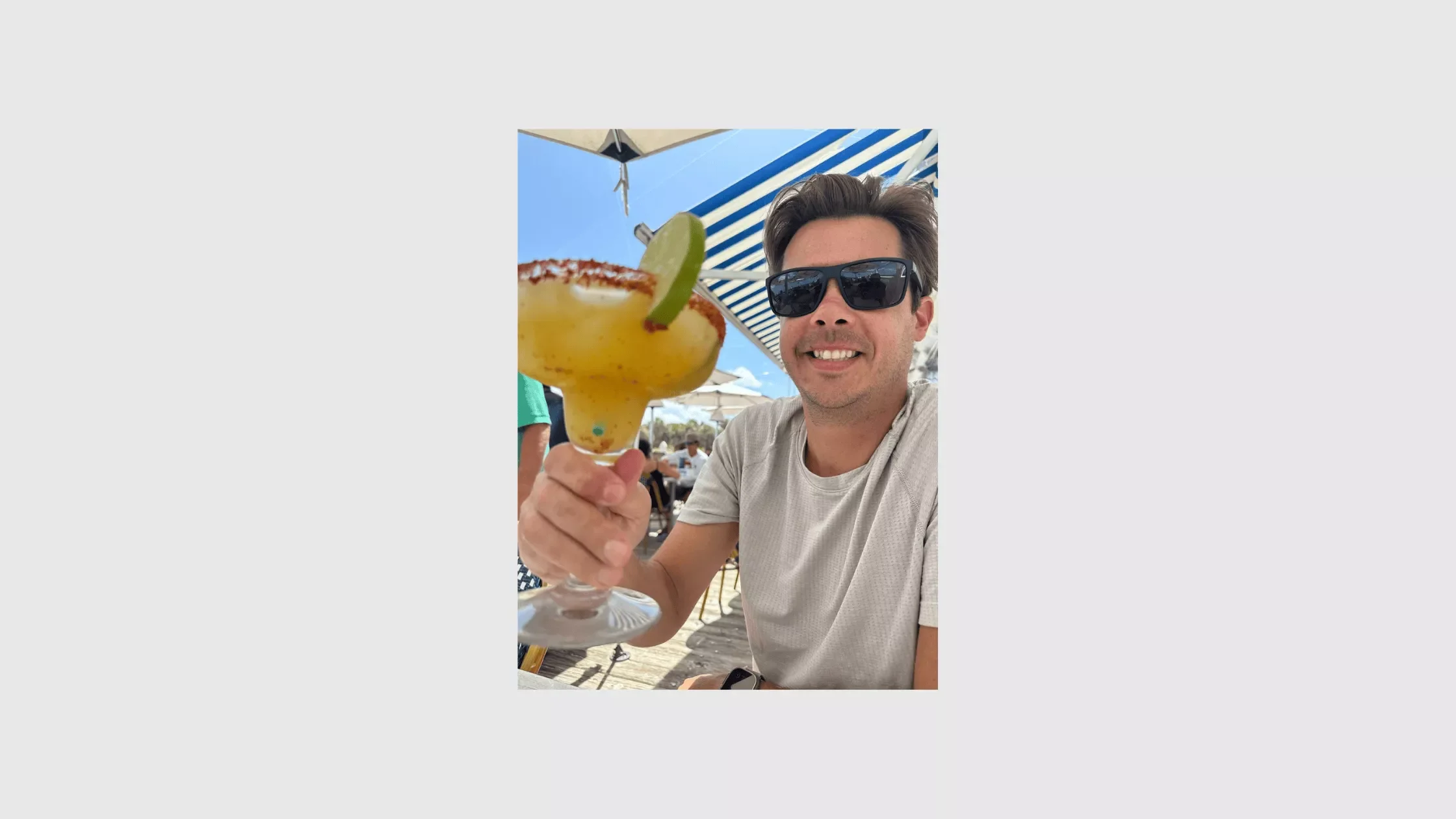🏖️ Menu Therapy with Nina: A Complete Guide to Safe Dining at Benny's on the Beach in Lake Worth
Few places capture the spirit of Lake Worth Beach like Benny's on the Beach and the iconic Lake Worth Pier. The salty breeze, rhythmic waves, and laid-back community vibe make this oceanfront destination a fine place to reconnect with life's simple pleasures after illness, injury, or recovery.
For adults recovering from stroke, living with Parkinson's disease, managing dysphagia (swallowing difficulties), or rebuilding communication skills, dining out can feel overwhelming. Questions arise: What's safe to eat? Will I choke? Can I enjoy myself without anxiety?
As a licensed speech-language pathologist specializing in adult neurological rehabilitation in Lake Worth, Nina Minervini, M.S., CCC-SLP helps clients navigate these challenges with confidence, knowledge, and practical strategies. This guide will show you exactly how to enjoy Benny's on the Beach safely, no matter where you are in your recovery journey.
🌊 Why Lake Worth Pier Ranks Top of the List for Recovery
The Lake Worth Beach & Casino Building Complex sits at the eastern end of the Lake Worth bridge, where A1A snuggles up to the Atlantic. As a multi-purpose venue, it's a therapeutic environment that offers sensory engagement, cognitive stimulation, and social connection—although its pool could use a filling some day.
What makes this location special for therapy:
Predictable, calming sensory input: The sound of waves, sea breeze, and open horizons reduce anxiety and support emotional regulation
Structured activities: Fishing, walking, and dining provide real-world contexts for practicing speech, memory, and problem-solving
Social opportunities: Casual interactions with fishers, vendors, and staff help rebuild conversational confidence
Accessible design: Ramps, wide pathways, and ample seating accommodate wheelchairs, walkers, and mobility aids
Whether you're working on speech clarity, swallowing safety, or cognitive recovery, this environment naturally supports therapeutic goals.
🧠 Understanding Your Condition: Why Safe Eating Matters
Before we dive into Benny's menu, let's explore why certain conditions affect eating and what we're addressing when we modify foods.
Dysphagia (Swallowing Difficulties)
What it is: Dysphagia means difficulty moving food or liquid safely from your mouth to your stomach. It can result from stroke, Parkinson's disease, ALS, head injury, dementia, or other neurological conditions.
Why it's dangerous: When swallowing doesn't work properly, food or liquid can enter your airway instead of your esophagus, leading to a condition called aspiration. This can cause choking, pneumonia, malnutrition, and dehydration.
What affects swallowing:
Texture: Dry, crumbly, or mixed-consistency foods are harder to control
Moisture: Insufficient saliva or sauce makes food stick in the throat
Size: Large bites require more coordination to chew and swallow
Sensory awareness: Reduced sensation means you might not feel food residue or aspiration
Timing: Delayed swallow reflex increases aspiration risk
Stroke Recovery
How stroke recovery affects eating:
Weakness on one side: Makes chewing, moving food in the mouth, and swallowing coordination difficult
Reduced sensation: You might not feel food pooling in your cheek or throat
Cognitive changes: Impulsivity, inattention, or memory problems can lead to unsafe eating behaviors
Fatigue: Eating requires significant energy; you may tire mid-meal
What you might experience: Pocketing food in your cheek, drooling, coughing during meals, feeling food "stuck," or avoiding certain textures without knowing why.
Parkinson's Disease
How Parkinson's affects eating:
Rigidity: Stiff jaw and throat muscles make chewing and swallowing effortful
Tremor: Can interfere with bringing food to your mouth or controlling utensils
Reduced facial expression: Affects lip closure and drooling control
Delayed swallow initiation: Food sits in your mouth or throat longer, increasing aspiration risk
Reduced voice volume: Often accompanies reduced swallow strength
What you might experience: Taking a long time to finish meals, coughing or throat clearing after swallowing, frequent throat infections, unintentional weight loss.
Cognitive Communication Disorders
How thinking affects eating:
Impulsivity: Taking bites that are too large or eating too quickly
Inattention: Forgetting to chew thoroughly or losing track of what's safe
Sequencing problems: Difficulty following multi-step tasks like cutting food, adding sauce, then eating
Memory: Forgetting swallowing precautions or which foods to avoid
📊 Understanding Dysphagia Diet Levels
The International Dysphagia Diet Standardisation Initiative (IDDSI) provides a universal framework for describing food textures and liquid thickness. Knowing your level helps you order safely anywhere.
IDDSI Levels 0-4: Liquids and Very Soft Foods
Level 0 | Thin Liquids (like water, coffee, juice): Safe if you have no swallowing impairment. Avoid if you aspirate on thin liquids.
Level 1 | Slightly Thick: Flows slower than water but through a straw. Examples: some smoothies, thickened coffee.
Level 2 | Mildly Thick: Effort needed to sip through a straw. Examples: nectar-consistency juices, some cream soups.
Level 3 | Moderately Thick (Liquidised): Cannot be drunk from a cup; must be eaten with a spoon. Examples: pureed soups, smooth yogurt.
Level 4 | Extremely Thick (Pureed): Cannot hold shape; spoon-thick. Examples: mashed potatoes, pureed vegetables, smooth applesauce.
At Benny's: You can request soups without chunks, or bring your own thickener for beverages.
IDDSI Levels 5-7: Solid Foods
Level 5 | Minced & Moist: Soft, moist, with small lumps (4mm). Can be mashed with a fork. No chewing required.
Examples at Benny's: Flaked salmon (no skin), mashed sides, risotto, scrambled eggs.
Level 6 | Soft & Bite-Sized: Soft food that can be chewed with minimal effort. Pieces no larger than 1.5cm.
Examples at Benny's: Tender fish, pasta in sauce, cooked vegetables, soft bread (if moistened).
Level 7 | Regular: Normal food textures; all consistencies allowed.
Examples at Benny's: Full menu access: steaks, sandwiches, salads, raw vegetables.
💡 Nina's Tip: Most adults recovering from stroke or Parkinson's do well on Level 6 (Soft & Bite-Sized) with modifications. Always consult your speech therapist for your specific level.
🍽️ The Complete Benny's on the Beach Menu Analysis
Now let's break down Benny's menu by category, explaining why each dish works or doesn't work for various swallowing and neurological conditions.
🐟 Fresh Fish & Seafood
✅ SAFE CHOICES
Grilled or Baked Salmon
Best for: Levels 5-7, stroke recovery, Parkinson's
Why it works: Naturally moist, flakes easily, rich in omega-3s for brain health. The fat content prevents dryness. Tender texture requires minimal chewing.
How to modify: Request no skin, ask for extra lemon butter or sauce, pair with soft sides like mashed potatoes or steamed broccoli. Cut into small pieces (pea-sized if Level 5, dime-sized if Level 6).
Avoid if: You're on Level 4 or below (needs pureeing first).
Mahi Mahi (grilled, not fried)
Best for: Levels 6-7
Why it works: Mild flavor, naturally moist when grilled, lean protein for sustained energy.
How to modify: Request extra sauce or butter, avoid blackened seasoning (can be dry), skip crispy skin. Ask for vegetables to be well-cooked, not al dente.
Caution: Mahi can be flakier than salmon, so ensure each bite is well-moistened.
Seafood Linguine (scallops, shrimp, mussels in white wine or marinara)
Best for: Levels 5-7, excellent for Parkinson's (high moisture)
Why it works: The pasta absorbs sauce, making every bite cohesive and moist. Seafood is tender and pre-cut into manageable sizes. The sauce provides lubrication for smooth swallowing.
How to modify: Request extra sauce, ask for pasta to be cooked soft (not al dente). If on Level 5, cut scallops and shrimp into smaller pieces. Avoid crusty bread on the side.
Why seafood works: Shrimp and scallops are naturally soft when cooked properly, and the marine protein breaks down easily in the mouth.
Grilled Shrimp
Best for: Levels 6-7
Why it works: Tender, moist, easy to cut into smaller pieces. Naturally bite-sized.
How to modify: Remove tails (choking hazard), request cocktail sauce or butter for moisture. Pair with soft sides.
Avoid: Fried shrimp as breading is dry and crumbly.
⚠️ USE CAUTION
Fish & Chips
Why it's risky: Breaded, fried coating is dry and crumbly. Flakes easily into small particles that can enter the airway. The batter creates a mixed texture (crunchy outside, soft inside) that's hard to control.
Who should avoid: Levels 4-6, anyone with reduced sensation, stroke survivors with pocketing.
If you must try: Remove all breading, request extra tartar sauce, take tiny bites, alternate with sips of thickened liquid.
Conch Fritters
Why it's risky: Extremely chewy, requires prolonged chewing, breaded exterior. Conch is naturally tough even when tenderized
Who should avoid: Levels 4-6, Parkinson's (rigidity makes chewing difficult), cognitive impairments (may swallow before fully chewing).
Calamari (fried)
Why it's risky: Very chewy, rubbery texture. Breading adds dryness. Can become lodged in the throat.
Who should avoid: Levels 4-6, anyone with chewing fatigue or reduced tongue strength.
🥗 Salads & Lighter Fare
✅ SAFE CHOICES (with modifications)
Beach Salad
Original: Mixed greens, goat cheese, roasted red peppers, oranges, almond granola
Best for: Levels 6-7 with modifications
How to modify:
Remove almond granola (dry, crunchy, aspiration risk)
Request greens to be chopped into small pieces
Goat cheese is soft and safe
Oranges should be segmented (no membranes)
Add extra dressing for moisture
Consider adding grilled salmon or shrimp for protein
Why salads are tricky: Raw vegetables are fibrous and require significant chewing. Leafy greens can clump in the mouth or throat. Mixed textures (crunchy + soft) increase aspiration risk.
Cobb Salad (modified)
Original: Mixed greens, grilled chicken, bacon, egg, avocado, tomato, blue cheese
How to modify:
Remove or dice bacon very small (chewy, dry)
Request chicken be diced small and extra moist
Keep egg (naturally soft)
Keep avocado (soft, creamy)
Remove raw tomato or request roasted
Add extra dressing
Consider swapping greens for spinach (softer)
Best for: Levels 6-7 with modifications
⚠️ AVOID OR USE EXTREME CAUTION
Caesar Salad
Why it's risky: Romaine lettuce is fibrous and crunchy. Croutons are extremely dry and hard. Parmesan shavings can clump.
Who should avoid: Levels 4-6, anyone with chewing weakness.
If modified: Remove croutons entirely, request finely chopped romaine, extra dressing, add soft protein.
🌮 Tacos & Sandwiches
✅ SAFE CHOICE (with modifications)
Mahi Mahi Tacos
Best for: Levels 6-7
How to modify:
Use only soft flour tortillas (never hard shells)
Remove or minimize coleslaw (crunchy, dry, fibrous)
Request extra sauce, sour cream, or guacamole for moisture
Ask for fish to be grilled (not fried) and cut into small pieces
Remove any crispy toppings
Why soft tortillas work: They absorb moisture and form a cohesive bolus (food ball) that's easier to control during swallowing.
⚠️ FOODS TO AVOID
Cuban Sandwich
Why it's risky: Dense, dry bread. Pork can be tough. Pickles are crunchy. Requires prolonged chewing and generates little saliva. The pressed sandwich format makes it even denser.
Who should avoid: Levels 4-6, Parkinson's, anyone with dry mouth (xerostomia).
Turkey "Yacht" Club Sandwich
Why it's risky: Thick, dry bread. Multiple layers of meat. Bacon is chewy. Lettuce and tomato add mixed textures. Turkey is notoriously dry.
Who should avoid: Levels 4-6, post-stroke with chewing weakness.
Cheesesteak
Why it's risky: Dense roll, chewy beef, requires significant jaw strength. The bread-to-filling ratio makes it difficult to get enough moisture in each bite.
Who should avoid: Levels 4-6, Parkinson's, TMJ issues.
🍝 Pasta & Comfort Foods
✅ EXCELLENT CHOICES
Seafood Linguine (covered above)
Any Pasta in Cream or Tomato Sauce
Best for: Levels 5-7
Why it works: Pasta is soft, absorbs sauce, easy to control in the mouth. Cream sauces add fat and moisture. Tomato sauces provide acidity that stimulates saliva production.
How to order: Request pasta cooked soft (not al dente), extra sauce, no hard bread on the side.
Protein additions: Grilled chicken (diced small), shrimp, scallops—all safe when tender.
Risotto (if available)
Best for: Levels 4-6
Why it works: Creamy, uniform texture, naturally soft, requires minimal chewing.
🍰 Desserts
✅ SAFE CHOICES
Key Lime Pie
Best for: Levels 5-7
Why it works: Smooth, creamy filling requires no chewing. Graham cracker crust softens when combined with filling. High moisture content. The tangy flavor stimulates saliva production.
How to modify: Take small bites, allow filling and crust to mix in your mouth before swallowing. If on Level 5, you can scrape off excess crust.
Why this is special: It tastes like Florida sunshine, and dessert is an important part of normalcy and quality of life.
Cheesecake (if available)
Best for: Levels 5-7
Why it works: Dense, moist, creamy, easy to control. No chewing required.
Ice Cream or Sorbet
Best for: Levels 5-7 (if not sensitive to cold)
Why it works: Melts in the mouth, no chewing, refreshing.
Caution: Cold can trigger coughing in some people. Start with a small spoonful. Avoid if you have cold sensitivity or reduced oral awareness.
⚠️ AVOID
Cookies, Brownies, Cake with Dry Texture
Why risky: Crumbly, dry, can scatter in the mouth and enter the airway. Requires saliva production to safely swallow.
Who should avoid: Levels 4-6, anyone with dry mouth or reduced tongue control.
🛠️ General Food Modification Strategies for Dining Out
These techniques work at Benny's and any restaurant:
1. Add Moisture to Everything
Request extra sauce, gravy, butter, or dressing on the side
Ask for broth or au jus to dip foods
Use sour cream, guacamole, mayo, or aioli as lubricants
Alternate bites of food with sips of liquid (water, juice, or appropriate thickness)
2. Simplify Mixed Textures
Order items with uniform consistency
Avoid foods that are crunchy + soft (like salads with croutons)
Separate components if needed (eat rice, then protein, not together)
Remove problem textures (like breading, seeds, or skins)
3. Control Portion Size
Cut everything into pea-sized (Level 5) or dime-sized (Level 6) pieces before you start eating
Use a smaller fork or spoon to prevent large bites
Put your utensil down between bites, as this slows eating and improves safety
Consider ordering appetizers as entrees for smaller portions
4. Communicate with Your Server
What to say:
"I have a medical condition that requires soft, moist foods. Can you help me modify this dish?"
"Can the chef prepare this without breading/frying?"
"I need extra sauce on the side."
"Can you cut this into small pieces in the kitchen?"
Don't be embarrassed. Restaurants want you to enjoy your meal safely. Benny's staff is known for being accommodating and kind.
5. Optimize Your Environment
Sit upright (90-degree angle at hips)
Minimize distractions, turn off your phone, and focus on eating
If dining with others, pause conversation while chewing and swallowing
Eat when alert and rested, not when fatigued
If you tire easily, order smaller meals or plan to take half home
6. Use Compensatory Strategies
Chin tuck: Gently tuck your chin toward your chest before swallowing (helps protect airway)
Head turn: If one side is weaker, turn your head toward the weak side (directs food to stronger side)
Multiple swallows: Swallow 2-3 times per bite to clear residue
Throat clear: Clear your throat after swallowing if needed, then swallow again
Alternate liquids and solids: "Wash down" each bite with a sip
💡 Nina's Reminder: These strategies should be taught by your SLP. Don't attempt new compensatory techniques without professional guidance.
🎣 Beyond the Plate: Therapeutic Activities at Lake Worth Pier
Therapy doesn't end when the meal does. The Lake Worth Pier area offers rich opportunities to practice speech, cognitive, and motor skills in natural contexts.
Fishing on the Pier
Therapeutic benefits:
Sequencing and planning: Rent a pole, select bait, set up your line, cast, wait, reel in—this is a real-world executive function task
Fine motor coordination: Handling fishing line, bait, and tackle strengthens hand-eye coordination (often impaired after stroke)
Patience and attention: Fishing requires sustained focus, an excellent activity for attention deficits and impulsivity
Social communication: Casual conversation with fellow anglers is low-pressure speech practice
Respiratory control: The act of casting and reeling provides natural breath support exercises
Sensory regulation: The repetitive motion, ocean sounds, and fresh air are calming for anxiety or overstimulation
How to start:
Rent a fishing pole at the pier shop (no experience required)
Buy bait inside, and practice asking for what you need
The pier staff are friendly and will help you get started
Bring a hat, sunscreen, and water
Speech practice opportunities:
Describe what you see, feel, and hear
Practice counting ("I've cast five times," "It's been 10 minutes")
If you catch something, tell someone about it (narrative skills)
Beach Walking
Therapeutic benefits:
Breath support for speech: Walking while talking aloud strengthens respiratory-phonatory coordination
Pacing and rate control: Syncing your steps with your words can slow rushed speech
Endurance: Builds stamina for longer speaking tasks
Vestibular input: The uneven sand surface challenges balance (good for fall prevention)
Mental health: Exercise and nature reduce depression and anxiety common after neurological events
How to incorporate therapy:
Walk barefoot in shallow water (sensory input, grounding)
Practice breathing exercises: inhale for 4 steps, exhale for 6
Count your steps aloud or name things you see ("blue umbrella, yellow towel, white bird")
If walking with a companion, practice conversational turn-taking
Lake Worth Beach Casino & R.G. Kreusler Park
Therapeutic benefits:
Shaded rest areas: Crucial for those who fatigue easily or are heat-sensitive (common with neurological conditions)
People-watching: Practice social cognition by observing interactions, guessing emotions, predicting behaviors
Quiet environment: Reduces cognitive load when overstimulated
Accessible seating: Benches and tables for resting between activities
Activities:
Bring a notebook and practice writing or drawing what you observe
Play a simple game like "I Spy" with a companion (visual attention, word-finding)
Practice deep breathing while watching the palms sway
Lake Worth Farmers Market
Every Saturday on the east side of the bridge (near the pier)
Therapeutic benefits:
Functional communication: Greet vendors, ask prices, request samples, make purchases
Money management: Practice counting change and calculating totals (math/cognitive skills)
Sensory stimulation: Smells, colors, textures engage multiple senses
Social interaction: Brief, low-stakes conversations build confidence
Real-world problem-solving: "Which fruits are soft and safe for me to eat?"
Activities:
Set a budget and practice staying within it
Describe produce using adjectives (color, size, texture, smell)
Ask vendors questions about their products (initiation and topic maintenance)
Buy ingredients and plan a safe meal at home (executive function)
💡 Nina's Tip: Markets can be crowded and overstimulating. Go early (7-9am) for a calmer experience, or bring noise-canceling headphones.
💬 Nina's Final Thoughts: Therapy Is Life
Recovery can happen all over this beautiful slice of Florida where we live. It happens at Benny's, on the pier, at the farmers market, and in every conversation you have. My job is to give you the tools. Your job is to use them…everywhere you go! Let’s find some practice for speech therapy in Lake Worth Beach everyday.
Dining out after a stroke, with Parkinson's, or while managing dysphagia isn't about perfection. It's about:
Safety: Choosing foods and environments that minimize risk
Enjoyment: Rediscovering the pleasure of a meal with a view
Connection: Sharing experiences with loved ones
Confidence: Trusting yourself to navigate the world again
Benny's on the Beach is more than a restaurant. It's a place where therapy meets real life, where the ocean breeze reminds you that you're still here, still growing, still capable of joy.
📞 Ready to Take the Next Step?
If you or a loved one need personalized guidance for safe eating, speech recovery, or cognitive rehabilitation, Nina Minervini, M.S., CCC-SLP provides compassionate, evidence-based in-home speech and swallowing therapy throughout Lake Worth and Palm Beach County.
Services include:
Comprehensive dysphagia assessment and management
Stroke and neurological rehabilitation
Voice and speech clarity therapy
Cognitive-communication therapy
Caregiver training and education
→ Learn More About In-Home Speech Therapy in Lake Worth
→ Schedule a Free Consultation
📍 Plan Your Visit to Benny's on the Beach
Address: Lake Worth Beach & Casino Building Complex, 10 South Ocean Blvd., Lake Worth Beach, FL 33460
Parking: Metered lots adjacent to the pier and R.G. Kreusler Park
Accessibility: Wheelchair and walker-accessible ramps and pathways throughout
Pier Fishing: Open daily, pole rental and bait available inside the pier shop
Farmers Market: Saturdays, east side of the bridge
Note: This information is provided for general educational purposes only and does not constitute medical or dietary advice. Recommendations are based on common clinical considerations for individuals with dysphagia, dysarthria, and neurological conditions such as stroke, Parkinson’s disease, or dementia. Always consult a licensed speech-language pathologist (SLP) or healthcare provider before making dietary changes, modifying food textures, or selecting meals for someone with swallowing or cognitive-communication challenges. Restaurant recipes and preparation methods may vary; confirm ingredients and textures with the server before ordering.
❓ Frequently Asked Questions
Q: What are the safest foods to order at Benny's on the Beach if I have dysphagia?
A: Grilled salmon, seafood linguine, mahi mahi tacos (soft tortilla only), and key lime pie are all excellent choices. Request extra sauce, remove breading, and cut food into small pieces.
Q: What IDDSI level do I need to know before dining out?
A: Ask your speech-language pathologist to assess your swallowing and provide your IDDSI level (typically Level 5, 6, or 7 for dining out). This determines which textures are safe.
Q: Can I eat seafood safely after a stroke?
A: Yes, when prepared correctly. Grilled or baked fish is naturally moist and tender. Avoid fried, breaded, or dried-out seafood. Always request extra sauce or butter for moisture.
Q: How do I modify a restaurant meal if I have Parkinson's disease?
A: Choose soft, moist foods with uniform textures. Avoid dry breads, tough meats, and crunchy items. Request food cut into small pieces, add extra sauce, and eat slowly in an upright position.
Q: Is it safe to go to the beach after a stroke?
A: Yes, with precautions. Walking on sand improves balance and strength. Bring water, wear sun protection, rest frequently, and go with a companion. The sensory input is excellent for recovery.
Q: What should I avoid ordering if I have swallowing difficulties?
A: Avoid dry sandwiches, fried foods (fish & chips, calamari), tough or chewy items (conch fritters, steak), raw vegetables, and crumbly desserts. Stick to moist, soft, uniform textures.
Q: Can speech therapy goals really be practiced at a restaurant?
A: Absolutely. Ordering food, conversing with servers, reading a menu, making decisions, and eating safely are all functional communication and swallowing goals. Real-world practice is essential.
Q: How do I know if I'm aspirating (food going into my airway)?
A: Signs include coughing or choking during meals, a wet or gurgled voice after swallowing, frequent throat clearing, shortness of breath, or recurrent pneumonia. See an SLP immediately for assessment.

